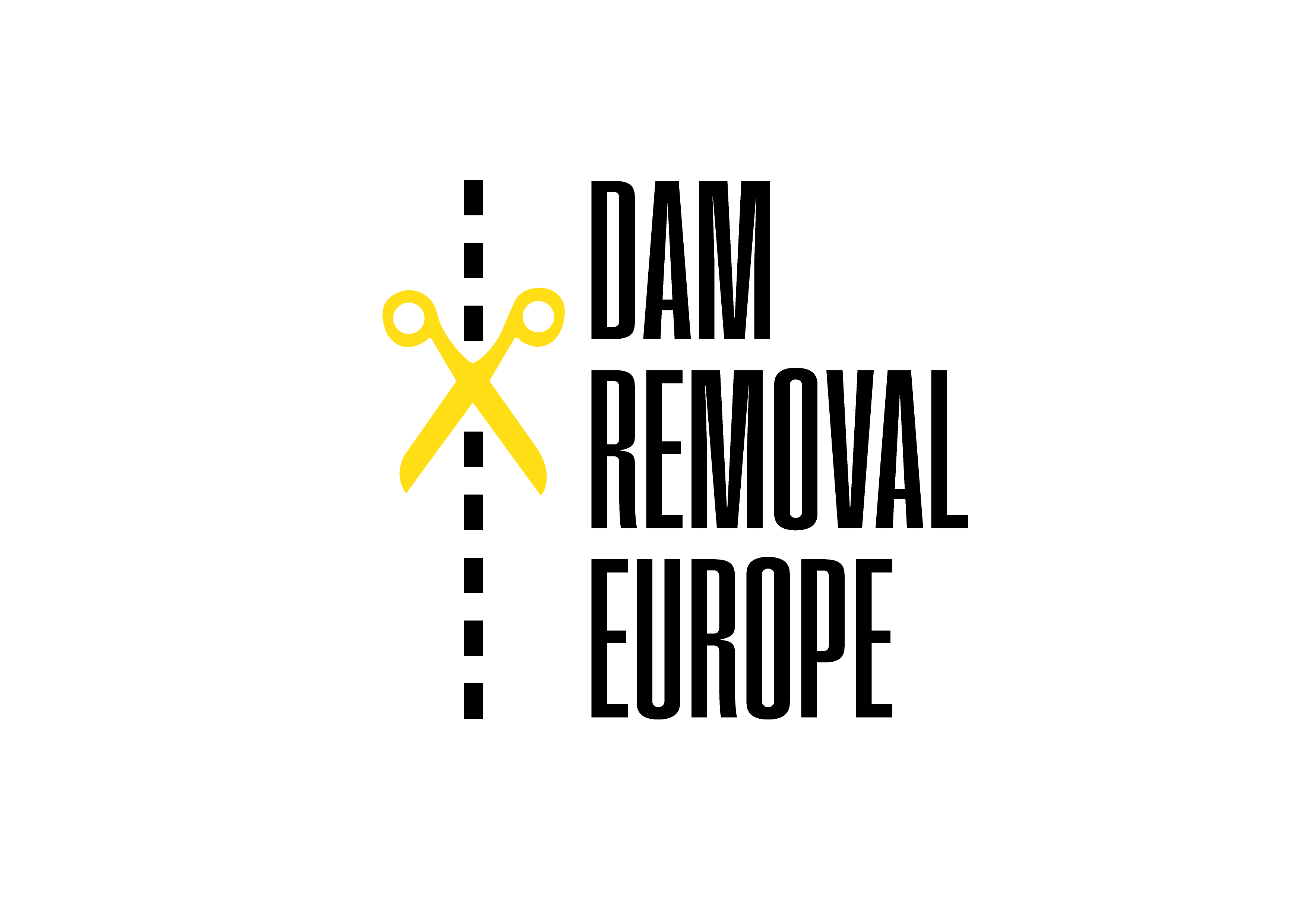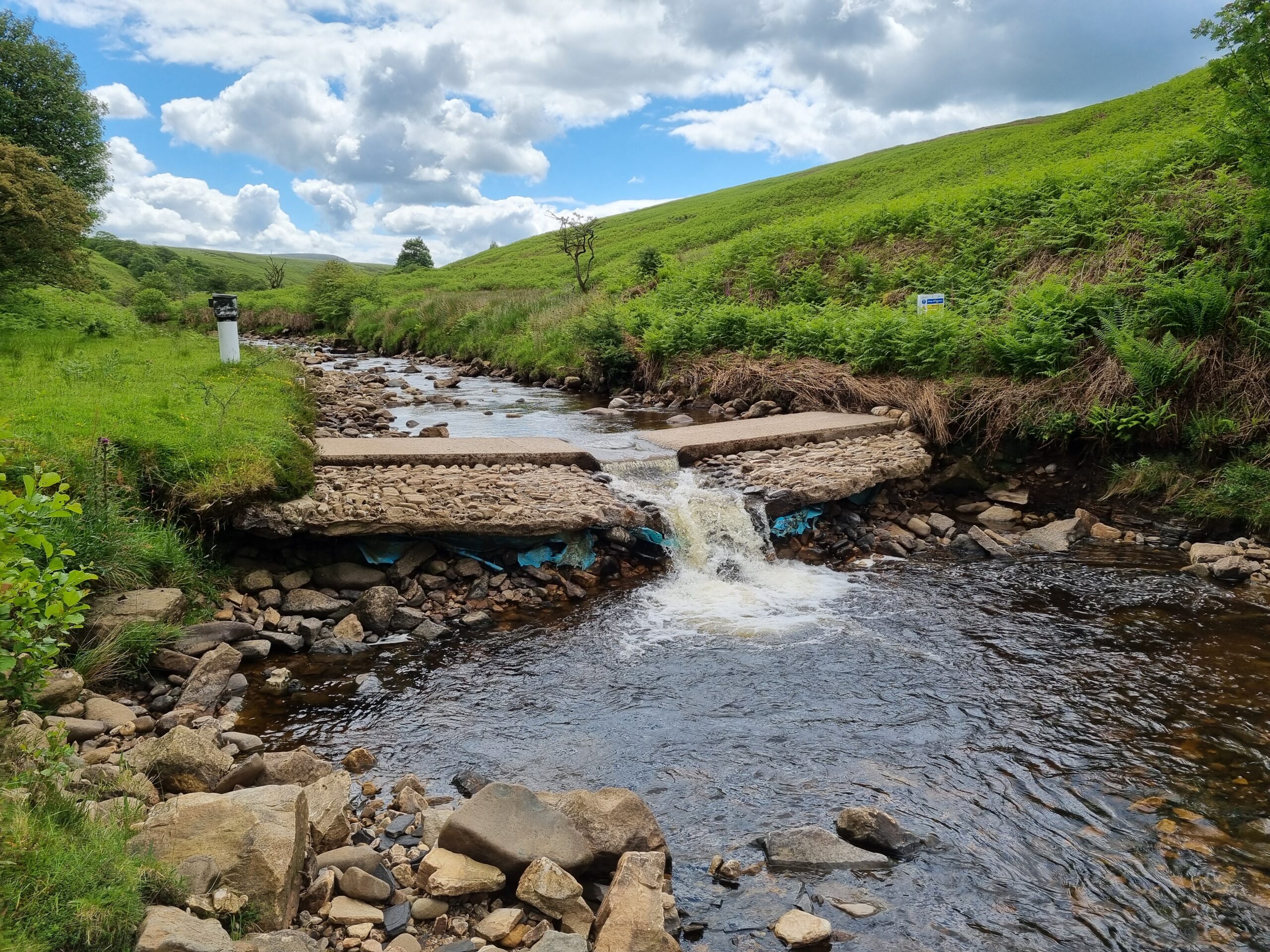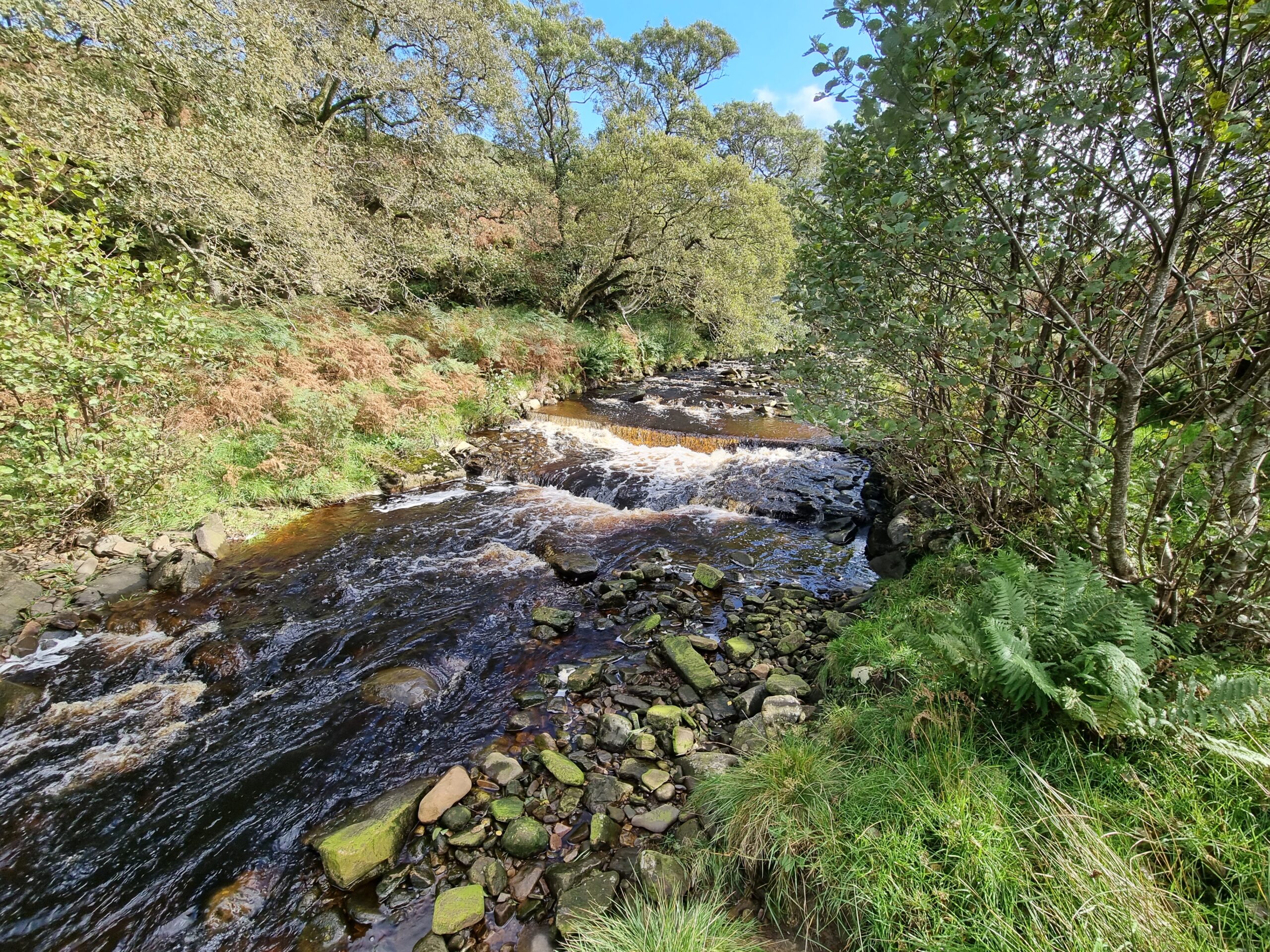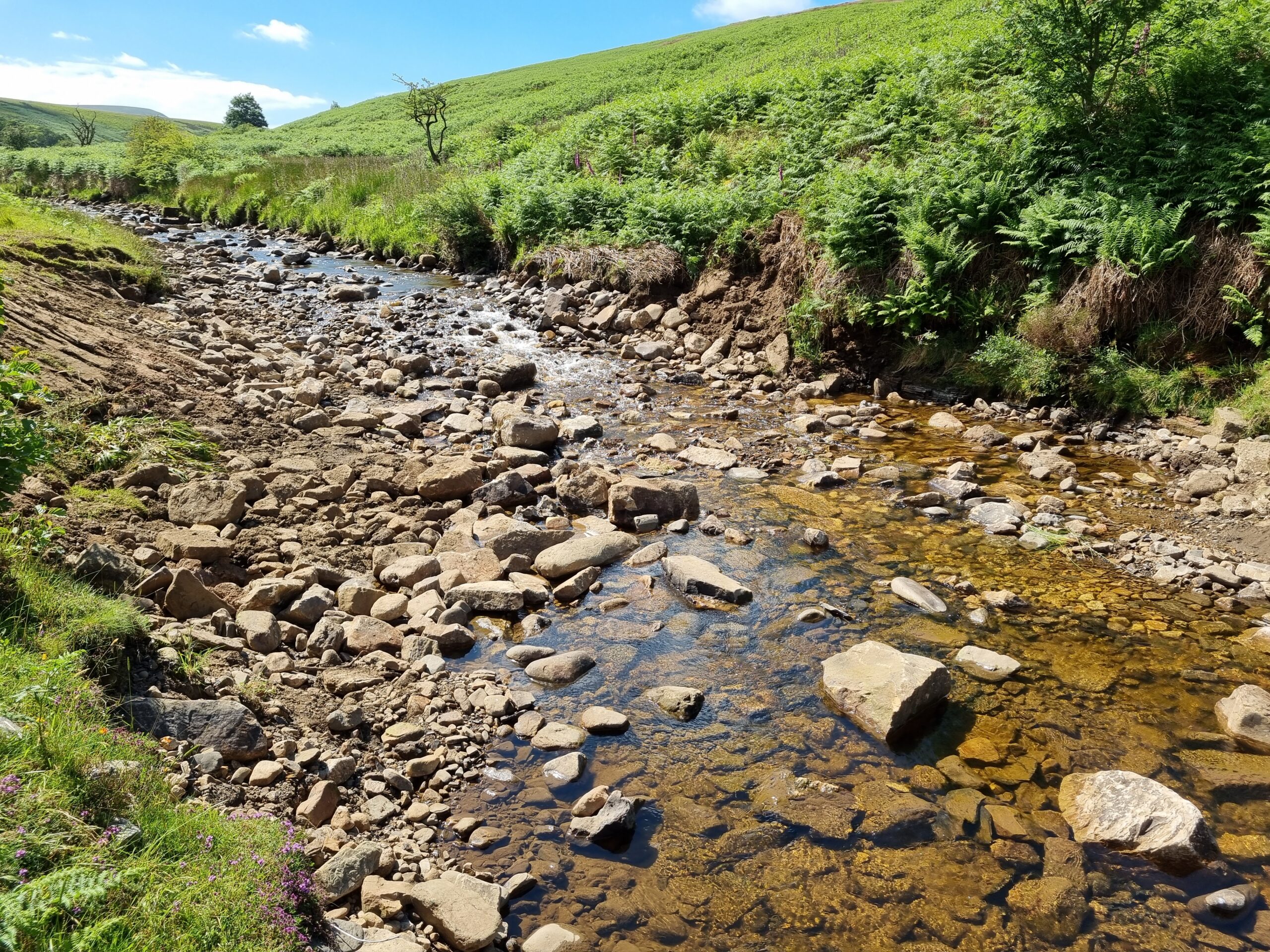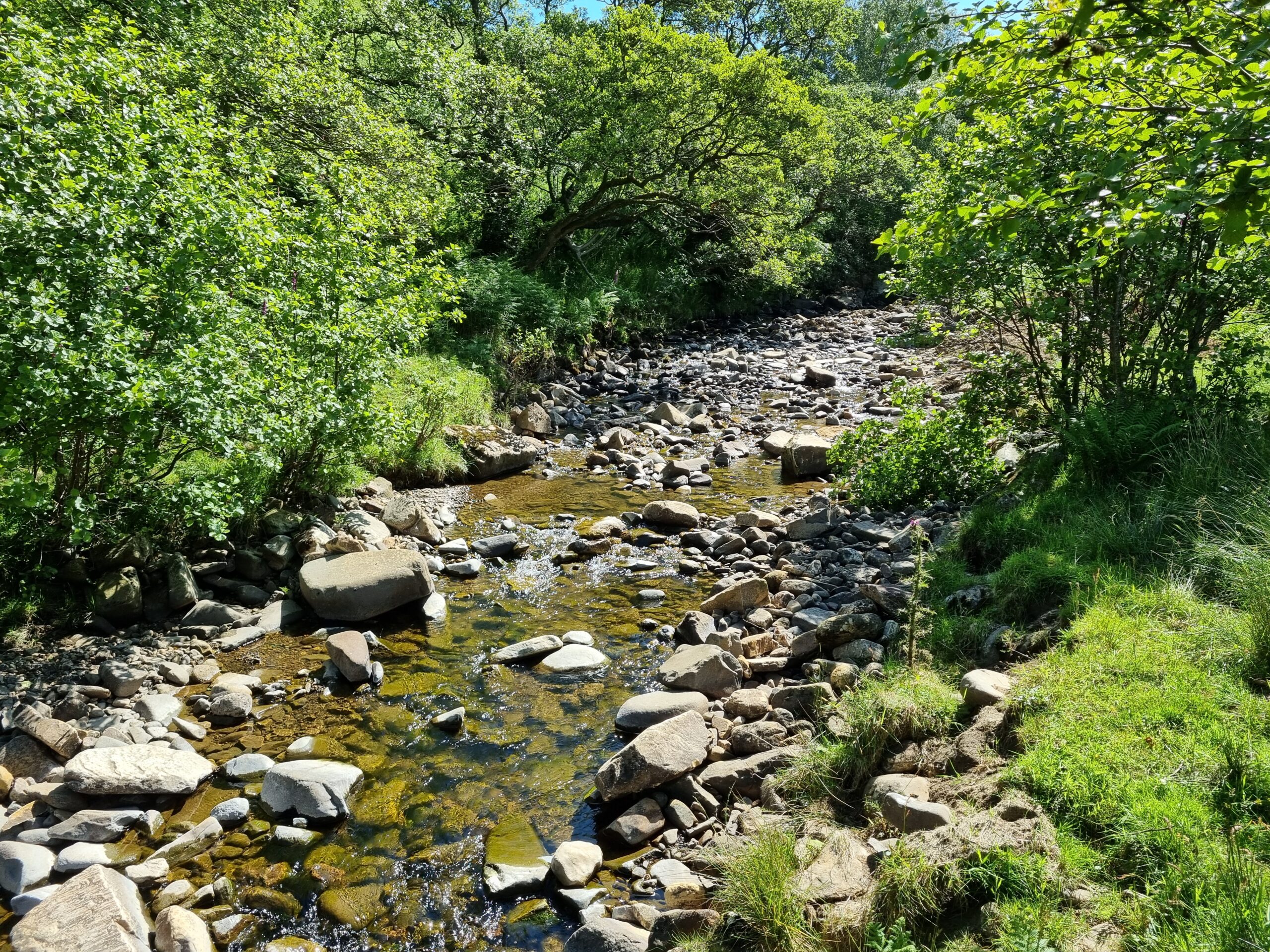Removal of two redundant flow gauging weirs on the River Gelt
The River Gelt
The River Gelt catchment in a sub-catchment of the River Irthing in the River Eden catchment (Figure 1). This area lies within the Solway Tweed River Basin District. River Gelt springs (as New Water) at Butt Hill, close to Cumbria’s border with Northumberland. It then joins Old Water which sources from Crookburn Pike. The river then flows northwest before running into River Irthing, about 10 miles east of Carlisle. The species of importance at the River Gelt sub-catchment are predominantly the brown trout (and sea trout) and salmon. However, several barriers fragment River Gelt and its tributaries blocking fish migration.
